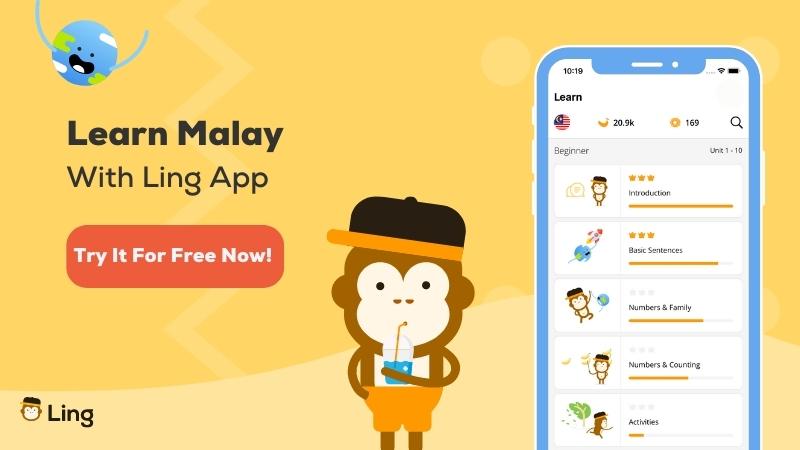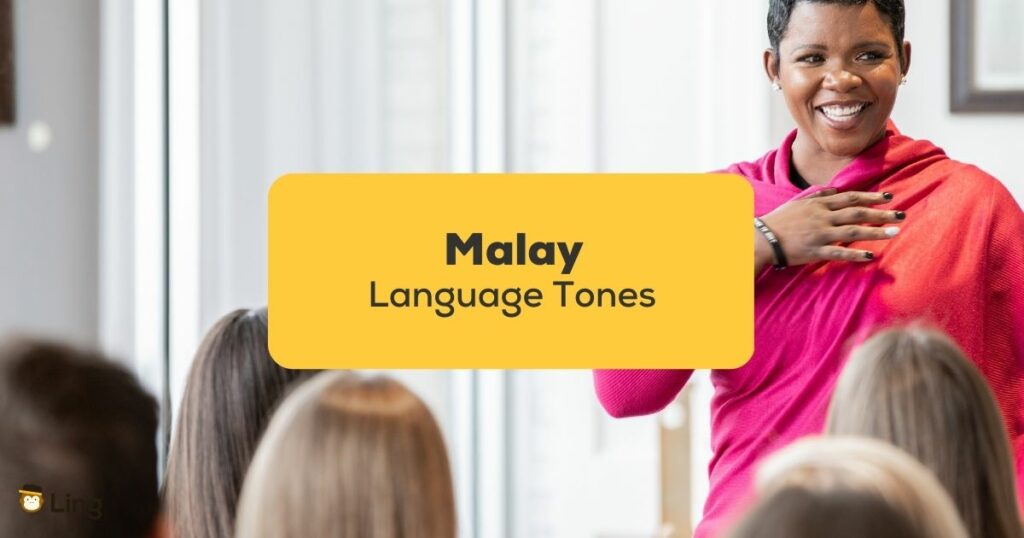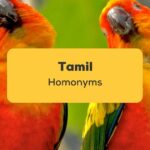Want to be a pro in speaking Malay language tones? One of the unique features of the Malay language or Bahasa Melayu is its use of tones, which are variations in pitch used to convey different meanings. In this post, we will explore the various tones used in the Malay language and how they are used in spoken and written communication. Let’s start!
Learning the tones of the Malay language is essential for several reasons, and this is also what makes mastering the language pretty hard. First, the tones are integral to the language and convey different meanings. Without proper knowledge of the tones, it is easy to misunderstand or misuse words, leading to confusion or even offense.
Second, learning the tones is a way to show respect for the language and culture of the Malay-speaking community. By demonstrating an understanding of the nuances of the language, you indicate that you are making an effort to communicate effectively and to connect with people on a deeper level.

What Are Tonal Languages?
Tonal languages are languages in which the pitch or tone of a word can change its meaning. This means that the tone of a word is just as important as the sounds that make up the word. So for language learners, it’s important to remember that to speak tonal languages correctly, they must not only pronounce the sounds of the words correctly but also use the correct pitch and tone.
Only 10% of the world’s languages are completely tonal, with many complex tones that may get your tongue and nose twisted! In Malay, some words show tonal character, and that is why it may seem to be a tonal language. It is similar to Penang Hokkien. Hokkien is the Lingua franca for Chinese dialects that comes from Old Chinese but was primarily used for travelers to understand each other.
Eventually, Penang Hokkien arrived. Among the many spoken languages in Malaysia, there are Malay language, Chinese, Tamil, English, and ethnic languages. It probably has various people and cultures due to many ethnic groups. Foreign language in Malaysia is common, and it brings beauty to the diversity of this nation. But let’s get back to tones!

Malay Language Tones
Intonation is the rise and fall when speaking. There are ten tones in language, and here they are, with some examples in Malay.
- Formal – The research clearly concludes that – Penyelidikan dengan jelas menyimpulkan bahawa…
- Informal – Hey, how’s life? – Hei, bagaimana kehidupan?
- Optimistic – It will be over soon. – Ia akan berakhir tidak lama lagi.
- Worried – I am too stressed about the test. – Saya terlalu tertekan dengan ujian.
- Friendly – Happy New Year! – Selamat tahun Baru!
- Encouraging – Keep going. You’re doing great! – Teruskan, anda hebat!
- Curious – I was wondering about it. – Saya tertanya-tanya mengenainya.
- Assertive – I am absolutely sure of him. – Saya benar-benar yakin dengan dia.
- Cooperative – We believe you. – Kami percaya anda.
- Surprised – She was shocked by the behavior. – Dia terkejut dengan tingkah laku itu.
In the Malay language, four tones can be identified when speaking words. By splitting words into syllables, we can identify each of these tones. Generally, we will refer to each tone as a “mak.” It sets each tone to be mak1, mak2, mak3, and mak4.
If we start using syllable structure, with consonants represented by “C” and vowels represented by “V,” it starts looking dangerously like binary code, and we would instead not go there! Case in point:
- Monosyllable – CVC/CV – gam (glue), di (at)
- Disyllable – CV+CV/V+CV/V+CVC – cuba (try), itu (that), ikan (fish)
In the method above, syllables can help our cause to understand tones, and it certainly helps in better pronunciation and spelling of Malay words. Malay also has trisyllabic and tetrasyllabic words like le/la/ki (men) and ma/ta/ha/ri (sun).
Regarding tonal language in Malay, according to syllables, two syllables usually have two tones and are often mak1 and mak2 or mak1 and mak4. Here are some examples:
- ma/ta = mak1/mak2
- ba/tu = mak1/mak2
- du/rian = mak1/mak4
- ja/ri = mak1/mak4
In the case of three-syllable words, the tones usually go mak3, mak1, and mak4 or easily 3-1-4. Like these:
- ba/ha/sa = mak3/ mak1/mak4
- jang/ka/an = mak3/mak1/mak4
- di/ma/na = mak3/mak1/mak4
In four-syllable words, it ends with the fourth tone or final syllable, which goes like mak3, mak3, mak1, and mak4 or 3-3-1-4:
- di/se/bab/kan = mak3/mak3/mak1/mak4
What if we have more than four syllables to deal with? Keep the last two tones as mak1 and mak4, and all the rest before that is commonly mak3. Easy right?
- mem/per/so/al/kan = mak3/mak3/mak3/mak1/mak4
- di/per/tang/gung/ja/wab/kan = mak3/mak3/mak3/mak3/mak3/mak1/mak4
Wrapping Up
Going down the road of history, the development of the language Penang Hokkien brought tones into the Malay peninsula. The two languages, Hokkien and Malay, contribute to tonal sandhi in Malay, which means a phonological change in language. Remember, Malay does not have tones, but the combination of languages has brought in tone to a certain extent.
Learn The Malay Language With The Ling App
Learning Malay vocabulary will undoubtedly help your journey to understand the languages in Malaysia. The alphabet and voiced consonants help you to know it in your way. The different dialects in Malaysia certainly have a similar pattern, and you can make connections between them once you start learning.

In Kuala Lumpur itself, you will pass by many languages and tones. The first language to notice is English, but the second language can be Malay, Chinese, Tamil, Penang Hokkien, and many others. To absorb this fantastic language deeper, you can try the Ling app. It is a gamified language-learning app that has transformed how to learn a new language. It has over 60 languages, including Malay and all its lessons are free.
The Ling app thrives on supporting its users in having an easy and fun experience while learning a new language. Understanding that language learning is rather challenging – especially if you are genuinely not attuned to different tongues, this app brings a delightful way for you actually to fall in love with learning languages.
Try downloading the app today! You can find it in the Apple Store or Google Play Store with just one click! Do you want to travel to countries in Southeast Asia? Open the doors to a world of languages and discover yourself in another country, culture, and language!



































































